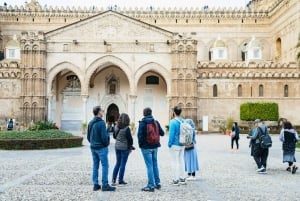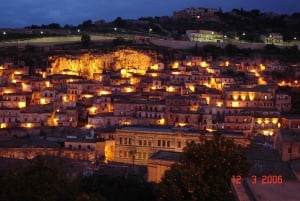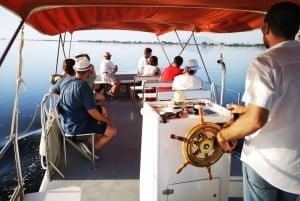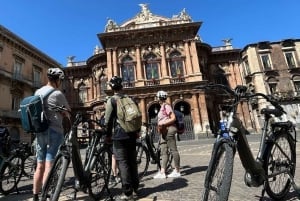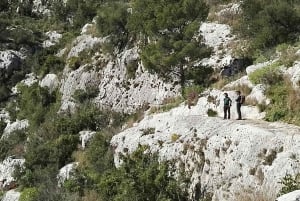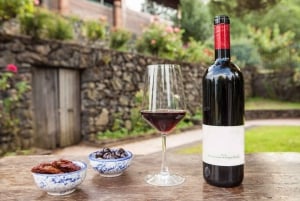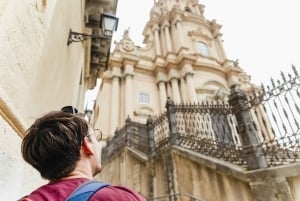History of Sicily
Sicily's history is rich, vibrant and diverse. Much of it can be gleaned simply by visiting the many ancient Greek temples, Phoenician settlements, the Bronze Age village on Panarea, Roman ruins, Arab and Norman architecture, Byzantine mosaics, and the Baroque churches and buildings on the island.
There is indeed an abundance of archaeological and architectural remains in Sicily that each reflects something of the former occupants - you would be hard pressed to find this anywhere else in one place.
Sicily was due to its strategic position as something of a pawn on the chessboard of the former Western world, a kind of crossroads in the Mediterranean, where all people came, conquered, stayed and left. And they all left also something of their cultures.
Sicily absorbed it all and created a unique personality of its own.
Prehistory of Sicily
The Italian peninsula has supported human life for thousands of years and there are cave paintings that date back as far as 15,000 BC in Sicily. The Sicani, Elymians and Sicels are the three defined groups of ancient Sicily and its original inhabitants.
Classical Age - Carthaginians, Greeks and Romans
The Carthaginians from North Africa began settling colonies on the western coast after 500 BC in places like Palermo, Solunto and Mozia. At the same time the Greeks established colonies on the eastern coast in Syracuse and Gela. There were frequent wars between the Carthage and Greek city states until the Romans intervened, and by 242 BC the island was in their control, bar Syracuse which fell later in 211 BC. Sicily was Rome's first province beyond the Italian peninsula and the Empire's granary for 700 years. The new inhabitants Romanized all existing settlements.
Lower Middle Ages - Barbarians, Byzantines and the Arabs
When the Roman Empire began to fall apart a period of foreign rule by Vandals and Ostrogoths from North Africa ensued from AD 468 until 535. This was short lived and a Byzantine general took the island in 535 AD and annexed it to their medieval state ruled from Constantinople.
The centuries under Byzantine rule were largely peaceful and prosperous in Sicily. The Byzantine culture had a lasting influence on the island. However, Constantinople could not give the island much attention and in 700 Moors from North Africa took the island of Pantelleria. They finally launched a fully fledged invasion of the mainland in 827. Palermo was taken in 831 and became the capital of the Arabs in Sicily. Their mosques, gardens, palaces, rural resettlement, irrigation services, industry and commerce brought much to the island. The Arabs were prone to divisive feuding, and when their empire became vulnerable the Normans conquered.
High Middle Ages - Normans and Swabians
The most brilliant age of Sicily’s history of occupation belongs to the Normans. They seized Messina from the Arabs in 1061 and captured Palermo 11 years later. For three more decades they waged a bloody campaign to take the whole island. Once they did they only lasted a century but under their policy of integration and legacy of art and architecture Sicily excelled. Their architectural brilliance is best displayed by their fine mosaics at Monreale.
When the fifth Norman King William II died in 1189 without an heir, the Hohenstaufen succeeded and Henry VI arrived with a fleet to crown himself King of Sicily. While there was largely peace during the Hohenstaufen reign, their authoritative stamp on society led to organized resistance and reprisals and ultimately the demise of Islam in Sicily. Antagonism between Frederick II and the Papacy finally led to an invasion in 1266 by Charles I of Naples who became King of Sicily. A revolt against the French sparked the Sicilian Vespers in 1282 and power passed to the Aragon dynasty. Five centuries of Spanish rule followed.
Late Middle Ages - The Spanish, Arogenese and Bourbon period
The kings of Aragon ruled Sicily during the 14th Century. They introduced Catalan language to the royal court and Sicilian for the parliament and citizens. In 1409 the Sicilian throne became part of the Crown of Aragon and was ruled by the kings of Spain via governors and viceroys - somewhat difficult given the distance. Feuding, economic stagnation, corruption, taxes, plague and even earthquakes made this period a rather difficult one. Although the rebuild after the 1693 earthquake in Sicilia Baroque has become a distinctive style of the island.
Small gangs of armed peasants also rose up during this time causing mayhem to crops, livestock and estates. These bands were referred to as "Mafia". During the 17th and 18th Centuries there was much unrest as short-term rulers controlled the island - the crown of Savoy, the Austrian Habsburg and the Bourbon Kings.
Unification
In 1860 GIuseppe Garibaldi arrived in Marsala with a thousand men to liberate the island from BOurbon rule and Sicily became free of Spain for the first time since 1282. The population voted in favour of a union with the new kingdom of Italy under Vittorio Emanuele II. Within a few years the populace grew dissatisfied and 1.5 million people left for North and South America in the years leading up to WWI. In the vacuum of power that followed the Mafia imposed their own laws and became increasingly important, emigration hurt the economy and there was another severe earthquake in Messina.
The World Wars
The two world wars in the 1900s dealt further blows to the Sicilian economy. While Mussolini's attempt to stamp out the Mafia in the 1920s simply drove them underground and abroad where they became more powerful. And his plan in the 1930s to encourage extensive wheat production caused soil exhaustion and erosion. During WW II Sicily was occupied by the Germans and was heavily bombed. The Allied Invasions were eventually successful in liberating the island, with the aid of the Mafia.
The Republic
After WW II anarchy, hunger, banditry and crime were widespread as the Mafia returned to power. A separatist movement also developed at this time for independence from the mainland and in 1946, when Italy was declared a republic, Sicily was granted regional autonomy.
In the 1950s and 60s there were sweeping land reforms in Sicily. The Mafia remained in control and assassinated in 1992 two anti-mafia magistrates, GIovanni Falcone and Paolo Borsellino. This led to a huge upheaval in Italian political life and a strong anti-Mafia social movement.
Today's Sicily
Today Sicily still faces economic, social and political problems such as illegal immigration, migration north and abroad, people-smuggling, filth and corruption. But in many ways it's also probably the best off it’s ever been.
Wonderfully much remains of all these former periods to visit and enjoy to this day. There can be no other place in the world you can see Norman cathedrals, Byzantine mosaics, a Greek theatre, Roman ruins, Arab cultivation and Baroque curlicues in just one day. The diversity of Sicily’s historical legacy can be tasted in the food, seen in the physical features of people, noted in architecture, observed in cultural practice and even in agricultural methods.


